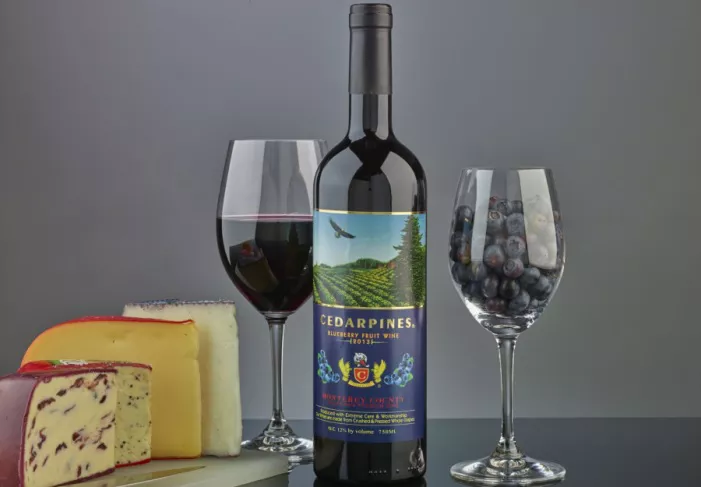Chardonnay, one of the most popular and versatile white wine grape varietals, has captivated wine enthusiasts worldwide for its diverse flavor profiles and expressions. With a multitude of regions producing this exquisite wine, connoisseurs often find themselves asking, “What is the best tasting Chardonnay?” The quest to uncover this enigmatic answer leads us into an exploration of the diverse terroirs, winemaking techniques, and tasting notes that contribute to the allure of Chardonnay.
Understanding Chardonnay: A Versatile White Wine
Chardonnay, known for its adaptability to various winemaking styles and climates, originates from the Burgundy region in France. This versatile grape has found a home in almost every wine-growing region across the globe, from the Old World to the New World, each area imprinting its unique characteristics on the final product. The quest for the best tasting Chardonnay demands an understanding of these diverse influences.
The Influence of Terroir on Chardonnay’s Flavor Profile
Terroir, a term encapsulating the environmental factors such as soil, climate, and topography, significantly shapes a Chardonnay’s taste. Burgundian Chardonnays often display mineral-driven, flinty notes due to their limestone-rich soils. In contrast, Chardonnays from warmer climates like California tend to feature ripe, tropical fruit flavors owing to sunnier conditions. The best tasting Chardonnay often emerges from a terroir that perfectly balances these elements, resulting in a harmonious expression of flavors and aromas.
Exploring Old World vs. New World Chardonnays
Old World and New World Chardonnays present distinct characteristics owing to their respective winemaking traditions. Old World Chardonnays, particularly those from Burgundy, emphasize subtlety, showcasing nuanced flavors of green apple, citrus, and hazelnut with an emphasis on minerality. Conversely, New World regions like Australia or California often produce bolder, fruit-forward Chardonnays, boasting ripe pineapple, mango, and vanilla, often influenced by oak aging. Determining the best tasting Chardonnay may hinge on personal preferences for these stylistic differences.
Winemaking Techniques: Influence on Chardonnay’s Taste
Winemaking techniques, including fermentation vessels, aging methods, and the use of oak, significantly impact a Chardonnay’s flavor profile. Stainless steel fermentation preserves the grape’s natural acidity, resulting in crisp, fresh Chardonnays. Conversely, oak aging imparts flavors of vanilla, toast, and butterscotch, contributing to a richer mouthfeel. The best tasting Chardonnay often emerges from a delicate balance between oak influence and the grape’s inherent characteristics.
Popular Chardonnay Regions: Unveiling Exquisite Offerings
Numerous wine regions globally produce exceptional Chardonnays, each showcasing their unique attributes and terroir-driven flavors. Burgundy’s Chablis region crafts vibrant, mineral-driven Chardonnays, while the Côte de Beaune produces elegant, complex wines. Moving to the New World, California’s Sonoma County offers a diverse range, from cool-climate Chardonnays in Russian River Valley to warmer, fruit-forward styles in Napa Valley. Australia’s Margaret River and Chile’s Casablanca Valley also stand out for their exceptional Chardonnay offerings.
Vintage Variations: The Intrigue of Chardonnay’s Annual Expression
Vintage variations add an element of intrigue to Chardonnay tasting. Each year’s climate conditions significantly impact grape ripening, influencing acidity, sugar levels, and overall flavor profile. Cooler vintages might yield Chardonnays with higher acidity and more citrusy notes, while warmer years produce riper, fuller-bodied wines. Exploring multiple vintages of a favored Chardonnay label can offer a deeper appreciation and understanding of its nuances, aiding in the quest for the best tasting Chardonnay.
The Best Tasting Chardonnay: A Subjective Pursuit
Determining the ultimate best tasting Chardonnay is a highly subjective endeavor. Preferences for flavor profiles, winemaking styles, and regional characteristics vary among wine enthusiasts. Some may favor the elegance and minerality of a Chablis, while others may prefer the opulence and richness of a Californian or Australian Chardonnay. Ultimately, the best tasting Chardonnay is the one that resonates most with an individual’s palate and preferences.
Blind Tastings and Exploration: Decoding Personal Preferences
Participating in blind tastings and actively exploring Chardonnays from different regions and producers can aid in deciphering personal preferences. By focusing solely on the sensory experience without the influence of labels or preconceptions, individuals can identify specific flavor profiles, textures, and characteristics they find most appealing. This approach empowers wine enthusiasts to discern the nuances that contribute to their perception of the best tasting Chardonnay.
Conclusion: The Ever-Evolving Quest for Excellence
The question, “What is the best tasting Chardonnay?” embodies a continuous quest driven by individual preferences, regional diversity, and winemaking techniques. As wine enthusiasts delve into the multifaceted world of Chardonnay, the exploration of terroirs, vintages, and winemaking styles enriches their understanding and appreciation of this beloved varietal. Ultimately, the best tasting Chardonnay is a personal discovery, reflecting one’s unique palate and the myriad expressions this noble grape offers.
In the realm of wine appreciation, the pursuit of the best tasting Chardonnay is not just a journey—it’s an ever-evolving narrative of exploration and delight.
As the saying goes, “In wine, there’s truth,” and in the realm of Chardonnay, that truth resides in the individual’s glass, awaiting discovery and enjoyment.


